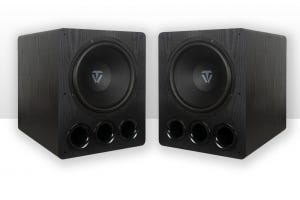
You’ve probably heard of banana plugs, but not many people actually know what they are for. Banana plugs are commonly use to secure speaker cable within homemade cable systems. But are they necessary? What is the purpose of banana plugs, and how are they installed?
Benefits of Banana Plugs
Instead of buying precut cables, many hi-fi pros prefer to buy speaker cable by the metre and do the wiring themselves. This can be cost-effective and more organized when setting up a multi-speaker system. Customising wire lengths to exactly what your system needs reduces excess cable clutter, keeping your wires neat and tidy. However, when you are cutting and wiring speaker cable yourself, you are left with a bare end rather than a plug. These bare ends can be directly connected to the speakers and the receiver or amplifier, however doing this leaves connections sensitive and vulnerable to damage. Banana plugs are small pieces of metal that are fixed to the ends of speaker cable as a more permanent connector.
Using banana plugs results in a stronger cable. Having a solid piece of metal right at the point of connection rather than a flexible wire keeps the cable fixed in position and prevents it from bending. This helps cables last longer and prevents them from moving around and disrupting the connection.
Banana plugs also can make organization easier. Many people simply prefer the tidy look that banana plugs offer compared to bare wire. Additionally, they can be color coded so you can easily identify cables Most often, they are either black or red to differentiate between positive and negative wires. Your speaker cable may already be black and red, but sometimes negative and positive speaker cable is the same color and isn’t immediately differentiable. In this case, colored banana plugs come in handy.
One of the most common reasons for using banana plugs is easy removal. Connecting bare speaker cable is typically only appropriate when you won’t be removing and reconnecting cables often, if ever. Handling exposed wire regularly leaves more opportunities for the wire to wear out or become damaged. Banana plugs protect wires and make it much easier to plug them in and unplug them.
Installing Banana Plugs
In order to attach banana plugs to your speaker cable, you'll need the following:
- Speaker wire
- Banana plugs (2 for each cable)
- A wire stripper
When working with cables of any kind, always make sure all of your associated devices are powered off before you start. Once you've trimmed your cables to the desired length, take these steps to attach your banana plugs:
- Strip the wires. Strip off 1/4" - 1/2" of wire insulation on the end of the cable using the wire strippers. You may have cut your speaker wire in pairs (negative and positive). Always separate wire pairs and work with individual cables.
- Twist the exposed copper wire ends to hold the strands together.
- Open the banana plugs. While there are different kinds of banana plugs, they all should have a hole and a piece that screws loose or off completely. Unscrew the banana plug to insert the wire.
- Insert the speaker cable into the banana plug. The hole will either be on the bottom or the side of the banana plug.
- Close the banana plug by screwing it tight, securing the cable.
- Repeat for other cables. That's it! Simply plug your cable into the speakers or receiver and repeat the process for the remaining cables.





